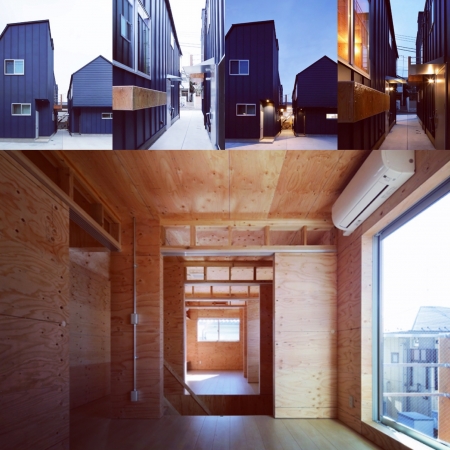コンテクストに左右されない
敷地の周辺環境のコンテクストは無視できないが無いものにはできるのではないかと考えた。コンテクストは敷地まで迫ってくる、それに対して素直に従えばコンテクストの一部に含まれてしまうが、うまく書き換えてしまえば自ら独自のコンテクストをつくることができる。
接点は壁である。外側は外壁として、内側には内壁がある。外壁と内壁の組み合わせが建築をつくり上げるが、同時に外壁と内壁の組み合わせは敷地の周辺環境のコンテクストを表現している。
この外壁と内壁の組み合わせを変化させることによってコンテクストを書き換え、自ら独自のコンテクストをつくる。それは敷地の周辺環境のコンテクストに左右されない状況で建築をつくり出すことでもある。
"Independent of context"
The context of the surrounding environment of the site cannot be ignored, but I thought that it could be done without it. The context approaches the site, and if you obediently follow it, it will be included in a part of the context, but if you rewrite it well, you can create your own context.
The point of contact is a wall. The outside is the outer wall and the inside is the inner wall. The combination of the outer wall and the inner wall creates the architecture, but at the same time, the combination of the outer wall and the inner wall expresses the context of the surrounding environment of the site.
By changing the combination of the outer wall and the inner wall, the context is rewritten and the own context is created. It is also to create architecture in a situation that is not influenced by the context of the surrounding environment of the site.


